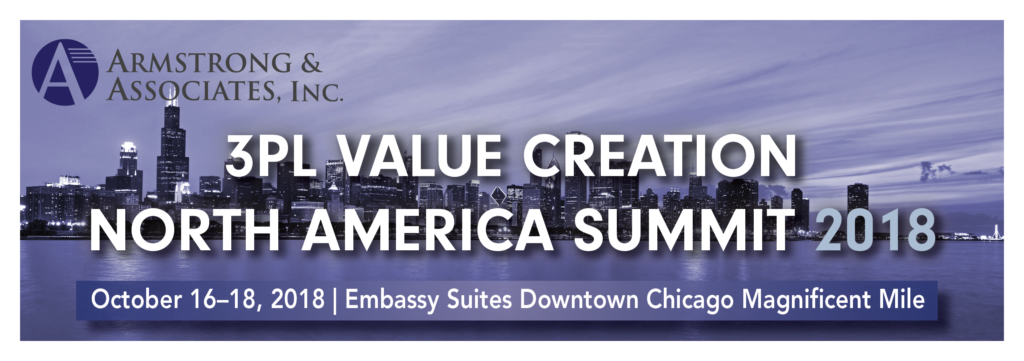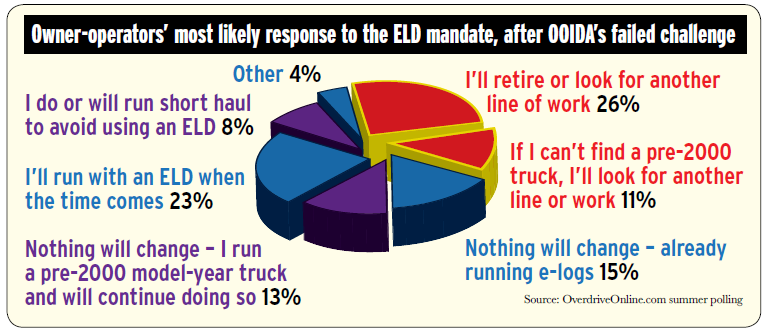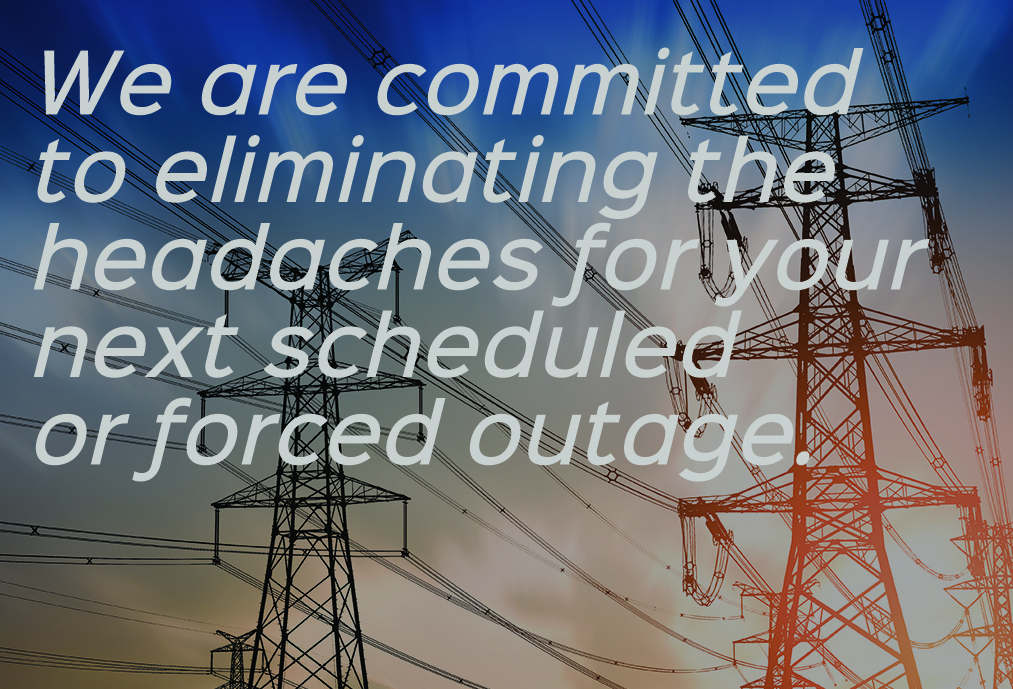

GLEN ELLYN, ILLINOIS – (August 8, 2018) Angela Eliacostas, CEO and founder of AGT Global Logistics, has been selected as a panelist for the 2018 3PL Value Creation North America Summit’s Domestic Transportation Management and Dedicated Carriage session on Wednesday, Oct. 17, from 2:30 – 3:30 p.m. CST.
With more than 25 years experience in third-party logistics, Eliacostas will join top caliber executives to review growth areas for success with domestic transportation management, freight brokerage, and dedicated contract carriage. In addition the panel will discuss cross selling VAWD and transportation management, electronic logging device and hours of service market impact, and structural changes from the major players in transportation management.
The 2018 3PL Value Creation North America Summit is a strategic event where C-suite executives, investment community leaders, and technology innovators gather to assess the future of the third-party logistics market and explore strategies for value creation to forge competitive advantage. The event is hosted by Armstrong & Associates, Inc., a leader in 3PL market research and consulting. Session topics will cover industry trends such as value-added services, recent mergers and acquisitions, e-commerce, and innovative technologies and automation.
The event will be held at Embassy Suites – Magnificent Mile in Chicago, Illinois, the summit takes place on October 16-18. Early bird registration is $2,490 for an all-access, three-day pass. Registration for one or two-day passes are also available.
Register at http://www.3plogistics.com/3plna2018 to join Angela and AGT Global Logistics at the 3PL Value Creation North America Summit 2018.
There is no denying that the rapid growth of e-commerce has had a drastic effect on supply chain operations, more specifically the expansion of reverse logistics operations.
In 2017 alone, e-commerce sales grew in the U.S. by 17%. Consumers spent $453 billion on the web for retail purchases in 2017, a 16% increase compared with $391 billion in 2016. That’s the highest growth rate since 2011, when online sales grew 17.5% over 2010.
Some have begun to call this current business climate as the “Age of Entitlement.” This simply means that customers now more than ever before are demanding goods be cheap, arrive fast, and with no pressure connected to the buying experience.
For example, it has become common practice for online shoppers to order much more product than they ever intend on buying. Shoppers commonly order the same shirt in 2 different sizes and 2 different colors, pick the size that fits best and the color that looks best, and return the other 3 shirts. While this is easy and convenient for the buyer, a whole new process has just begun for the seller as they need to find a way to reuse the 3 shirts that didn’t make the cut.
If you are riding the e-commerce wave and have plans to grow in the coming year, here are some things you need to consider when it comes to maximizing profit through reverse logistics operations.
As mentioned in the opening, the e-commerce market is growing exponentially and shows no sign of slowing down, but if you truly want to benefit you must incorporate smart and efficient reverse logistics operations into your supply chain.

Outage planning can be a very complicated process that requires the coordination of available resources, tight scheduling, consideration of safety issues, and the satisfying of the seemingly endless regulatory and technical requirements. Hundreds — sometimes even thousands — of contract workers are brought on site to support the outage, allowing the utility to work continuously, around the clock, until the outage is complete. Scheduled outages are often planned up to a year in advance and can sometimes last for months.
In recent years, cost overruns for planned outages at some utilities have dramatically exceeded their original set-asides for that work. Whether you just completed an outage, are in the midst of one, or in the planning process, here are 5 things to consider before planning your next scheduled outage.
What are your biggest logistical challenges? There are a number of logistical challenges that may come into play during an outage. One example would be geographical challenges. Is your facility in a geographically isolated location? When a customer or its vendor is in a geographically isolated area, capacity may need to be sought out at the nearest metropolitan area which, dependent on region, may encounter delays in responding to a shipper and/or consignee. Also, geographically isolated areas are impacted by lack of equipment to support pickups and/or deliveries and may not be accessible by truck or plane.
What deployable resources do you have? Many of the decisions will be heavily influenced by the number of resources you have available. Do you have a small team? Are you in a situation where many of the outage tasks and responsibilities need to be outsourced to vendors? At AGT Global Logistics we train our operations team to be prepared to support stations in outages by reviewing historical data and lessons learned from past outages, and insights gained from pre-outage meetings with members of the supply chain team. In order to sufficiently support a station during its outage, 24/7 operations and additional capacity are critical, especially in the event of something unexpected arising.
What are some standard pain points with outages? Which areas has your business identified for improvement? Has your organization identified areas of improvement for the next scheduled outage? If so, it’s important to think about what steps are being taken to address those key areas that have been identified prior to the outage. At AGT, when we work with a client on a scheduled outage we use insights gained from a briefing meeting, these little tidbits are often invaluable pieces of information that we hold onto and consider as we move through the planning and execution process.
What does success look like for your outage? Success can come in many different forms, it’s important to determine what is most important to you and your organization. Is staying on timeline most important? Is not going over the allocated budget a key outcome? Is your outage a high-risk operation where safety of all workers is paramount? Whatever your goals are, its critical that you set a benchmark as to what success would be and gear all efforts towards reaching that goal.
Are there any new laws or regulations that will impact your outage planning or execution? As mentioned in the opening, there are endless regulatory and compliance issues that can impact an outage. It’s important to stay up to date on new laws and regulations to assure your outage won’t be affected, and if it is, being informed will allow enough time to adjust and prepare for impending changes. One example of this is the recent ELD mandate. With electronic logs, delays at the shipper and/or consignee can result in delays to current transit or subsequent transportation. With efforts to load and unload in a timely manner, and being prepared with appropriate resources from shippers and consignees, the effect can be lessened. Not understanding the new ELD mandate and the impact it will have could prove to be a costly oversight.
There are certainly many other factors to be taken into consideration but starting with these five will put you on the path to a successfully planned outage.

Regardless of where you land on the debate regarding the ELD mandate or its merits, the reality is that the time for implementation has arrived and transportation and logistics professionals must adhere to these new measures.
As you all know, the efforts made to delay or halt the decision on ELD’s were ultimately unsuccessful, and the smartest thing anyone in the industry can do at this point is to be knowledgeable about the new regulations and be prepared for the effects its implementation will have on us all.
We know two things for sure:
1. The effects of the ELD regulations will ripple across all sectors of the trucking and logistics industries
2. The amount of information on this topic is pretty staggering
With those points in mind, we’re going to break it up into three small sections and provide insights on how this mandate will impact third party logistics providers, Drivers, and the supply chain as a whole.
Third Party Logistics Providers
First, lets discuss the effect that the new regulations will have on third party logistics providers like AGT.
● In order to play a part in proper use of Hours Of Service (HOS), 3PL’s will need to work with carriers to properly schedule and communicate the pickup and delivery schedule to the shippers and receivers.
● As productivity will decrease, 450-600 mile one day trips will result in 2 day trips and 900-1200 mile 2 day trips will likely become 3 day trips – as a result rates will increase.
● AGT plans on strategically working with carriers of various fleet sizes and markets to mitigate the effects of the ELD mandate on shippers & 3PL’s.
Drivers
This is where the rubber literally hits the road, and our drivers will certainly feel this mandate the heaviest out of all parties involved.
● Though the intended impact of the ELD Mandate is to increase the safety of drivers by reducing “driver fatigue,” many still face the daunting decision of whether to comply or cease operations altogether.
● There will be many drivers who have been moving shipments with accelerated transit who will now be forced to operate according to legal hours. This will impact the frequency with which a truck is available for use and change how long it takes some shipments to deliver.
● With these new hours restrictions, it is important for carriers to work with shippers and 3PL’s to make sure loads are ready and driver selection is based on best HOS for that specific trip.
Here’s some of the responses from owner-operators’ when asked about the ELD mandate in a recent poll:

Overall Supply Chain
Lastly, let’s finish by pointing out what this new mandate will do to the overall supply chain.
Communication between all parties will be critical to the efficiency of supply chains. HOS will become a hot commodity and will need to be maximized.
Rate increases are also likely to impact shippers/receivers who have slow loading or unloading times. This is something that can’t be overlooked. Shippers and receivers need to be prepared with resources to load & unload shipments.
● Shippers that are prepared with resources to load, all necessary paperwork completed and an accurate time for loading will prevent delays resulting in less wasted drivers HOS.
● In that same respect, if the receiver is also prepared, the driver can promptly unload the freight, possibly reserving HOS for the next shipment and allowing for more capacity to other shippers and/or 3PL’s.
● Delays in loading and unloading could now be more costly than ever before.
While the ELD mandate is not “the end of the world” it does create a number of new pitfalls and considerations that need to be navigated carefully if your company is going to thrive in the new logistics landscape – particularly if you own/operate/manage a smaller fleet.
We hope this information was helpful. Please feel free to contact us with any questions you may have.
This article was written for Radwaste Solutions by AGT President and Founder, Angela Eliacostas. Reprinted with the permission from the Spring 2017 issue of Radwaste Solutions, © 2017 by the American Nuclear Society.
Transporting radioactive materials is a process that is watched very closely by both federal agencies and the parties responsible for the safe shipment of inherently dangerous materials.
About 20 million consignments of all sizes containing radioactive materials are routinely transported worldwide each year on public roads, railways and ships. If not managed properly, the transportation of hazardous materials can result in accidents and spills, monetary damages, injury and even death. According to the Pipeline and Hazardous Materials Safety Administration, in 2016 alone, more than 5,000 incidents have occurred during the transportation of hazardous materials resulting in more than 46 million dollars of damage, 30 injuries and five fatalities.
 From a third-party logistics perspective, this job requires an immense amount of knowledge and expertise in order to move radioactive cargo safely and efficiently – keeping the utility world turning. There are many contributing factors to be considered when transporting contaminated materials – insurance and liability, regulatory restrictions, carrier qualifications, safety protocols and more.
From a third-party logistics perspective, this job requires an immense amount of knowledge and expertise in order to move radioactive cargo safely and efficiently – keeping the utility world turning. There are many contributing factors to be considered when transporting contaminated materials – insurance and liability, regulatory restrictions, carrier qualifications, safety protocols and more.
A comprehensive insurance and liability plan
For a third-party logistics provider (3PL), insurance and liability can sometimes present unique challenges. In order to transport hazardous waste and/or contaminated materials, there are significant premium increases that 3PL’s need to manage and take into consideration throughout the freight-forwarding quotation process.
There is an important distinction made between actual spent radioactive waste and materials that have been contaminated, such as tools and equipment used in nuclear plants. In order to be certified to transport radioactive waste and/or contaminated materials, 3PL’s must retain a special insurance policy dependent upon a class system created by the Nuclear Regulatory Commission (NRC).
When transporting materials that are inherently high-risk, liability is also something that 3PL providers and freight forwarders must understand well. If a carrier takes a shipment without the proper documentation, the 3PL provider is liable, and must be ready to assume responsibility for any fines or damage. The 3PL provider is also liable for any equipment lost or damaged during transport.
An unstoppable safety protocol

Due to the high stakes of hazardous material transportation, 3PLs and utility companies alike must establish a system of safety protocols to ensure the safety of employees, carriers and the general public. From documentation of materials handled to cleanup and security clearance, freight forwarders must adhere to all safety protocols.
The majority of hazardous material transportation jobs begin and/or end at utility plants. Before any vehicles and equipment may enter or leave the “gated area” of a utility plant, it must be searched extensively to ensure there is no trace of contamination. This process can take as little as a few hours or a full day depending on the size of the vehicle and trailer and material transported. Once this process is complete, it’s time to hit the road.
The U.S. Department of Transportation (DOT) requires extensive documentation of all materials traveling on public roads. The only way for the DOT officials to know what is being transported inside a vehicle is by reviewing the shipping manifesto. These documents clearly specify what is being transported through a classification system of words and codes in compliance with the DOT. Shipping manifestos must be readily accessible to the driver and to emergency response personnel at all times. In the event of an accident, emergency officials are quickly able to understand the material being transported and take the proper precautionary steps.
After transporting contaminated equipment and unloading materials, the vehicle and equipment must be inspected to ensure there is no residual contamination. This post-transport cleanup process is known as “Free release.” The vendor conducting the Free Release cleanup must be certified to do so and has final say as to whether the vehicle and trailer will be released for the next job. Beyond the vehicle and trailer, carriers must have all clothes laundered through a special process that targets and removes hazardous materials and accounts for the safe disposal of water used, keeping the carrier and his or her family safe.
Other agencies and organizations involved
When transporting hazardous materials, 3PLs need to work alongside regulatory agencies and organizations to ensure the overall safety of all parties involved.
The U.S. Nuclear Regulatory Commission (NRC) works to protect public health and safety, the environment, and our national security. Proper handling of nuclear materials helps to protect both the safety of the public and the plant workers. To achieve this, the NRC works with the U.S. Department of Transportation (DOT) and the Department of Energy (DOE). Together, these agencies help ensure nuclear materials are packaged and transported safely.
The DOT coordinates with the NRC to set rules for the packaging of nuclear materials. The DOT regulates carriers, sets standards for routes, and is responsible for international agreements on the transport of all hazardous materials. Every two years, the DOT requires that carriers and 3PL providers complete mandatory hazardous training courses to renew their certification.
Selecting proven carriers
When handling a radioactive shipment, 3PL providers need to thoroughly vet all carriers before enlisting their services. Currently, there’s a group of proven, trusted, and NRC certified carriers that are tasked with safely hauling contaminated materials.
There are essentially three classes of carriers:
Common and contract carriers provide a service to others. They carry other people’s materials. Common carriers have published rates for hauling material, while contract carriers negotiate a specific contract with the shipper. 3PL providers work with both common and contract carriers.
One of the challenges 3PL companies face when trying to transport radioactive is that not a lot of carriers will transport class 7 shipments due to the risk involved and lengthy regulatory process.
As discussed earlier, the documentation and check-in/check-out process often takes many hours, sometimes even an entire day. This is something freight forwarders must take into consideration when planning and quoting a job for transport.
One way 3PL companies choose carriers is by looking at CSA scores. CSA stands for Compliance, Safety, Accountability, and is an initiative that was introduced by the Federal Motor Carrier Safety Administration (FMCSA) to improve the overall safety of commercial motor vehicles. Launched in December 2010, it is a safety enforcement program based on carrier performance and driven by the data collected on them. The CSA program is meant to allow the FMCSA to put a more intense focus on companies that pose the highest safety risks on the roads.The ultimate goal of the CSA program is to make the roads safer for both carriers and the public. To achieve this, both motor carriers and drivers are held accountable for their role in safety.
So how are CSA scores calculated? A company’s safety data is collected from roadside inspections, crash reports, investigation results and registration details. All this data is then made available on the FMCSA’s Safety Management System (SMS) website, which is updated on a monthly basis.
The SMS takes into consideration the amount, severity and date of any violations, inspections or crashes a carrier has been involved in. There is more weight given to violations that are more recent, and after two years violations are removed from the record. Also, crashes are weighted based on severity, so a crash involving a fatality or injury has more impact on your score than one that just required a tow.
Having good CSA scores reduces overall involvement with the DOT, allowing carriers to get on with their day-to-day operations. By keeping good scores, they can greatly reduce fines and expect a lot less frequent or time-consuming roadside inspections.
 About the Author
About the Author
Angela Eliacostas, President and Founder, AGT Global Logistics.
Specializing in service to the nuclear, fossil, and power industries AGT Global Logistics keeps their clients’ world’s turning with timely service, competitive rates, unstoppable customer service and a full menu of service offerings. Under her guidance, AGT Global Logistics has remained incidence free, since its inception in 2005.
With more than 25 years in the transportation industry, Angela Eliacostas has worked her way from the ground up. Eliacostas is now a premier transportation contract negotiator and an industry leader in expediting shipments. She serves as a liaison between carriers and companies, mostly within the utilities industry. Eliacostas is also involved in public affairs, lobbying alongside utility companies, petitioning for the use of nuclear power as a safe, reliable energy source.
Eliacostas has been recognized for making AGT Global Logistics one of the top 50 woman owned businesses in Illinois and one of the 500 woman owned businesses in the U.S. for the last 2 years running.
Interested in learning more? Give us a call today!
Investing in Expert Logistical Planning and Execution Results in Safe, Reliable, Cost-effective, Nuclear Energy Generation

For all its merits, the nuclear power industry has been trapped in a vicious circle for some time. Here’s how it works: competition from cheap sources of natural gas (fracking) leads to nuclear power companies instituting cost-cutting measures in an effort to remain profitable. Those cuts can include cutting back allocations for preparedness, which can then invariably result in dramatic cost-overruns when foreseeable, preventable problems erupt that swamp budgets that are already stretched to the breaking point. In the bargain, public perception of the safety and reliability of the entire industry takes another hit, exerting even more pressure on the industry as a whole.
As withering as this state of affairs is, it only represents the day-to-day downward trajectory for nuclear energy; lack of logistical planning also opens up the possibility of the occurrence of much more dramatic, far more-costly events, such as the The Fukushima Daiichi nuclear disaster.
In February of 2011, the massive Tōhoku earthquake triggered a deadly tsunami that rocked Japan’s Fukushima Daiichi nuclear power plant, permanently damaging several reactors, and leading to the decommissioning of the entire plant. Tellingly, however, the underlying cause of the plant failure was found to be not this historic natural disaster, but a lack of planning on the part of the Tokyo Electric Power Company (TEPCO). After an exhaustive investigation into the disaster, the Fukushima Nuclear Accident Independent Investigation Commission (NAIIC) determined that the causes of the accident had been foreseeable, and that TEPCO had failed to plan and perform required risk assessments that would have prevented the plant’s failure. The total cost associated with this disaster have been estimated as high as 250 billion dollars. And all of it could have been avoided had TEPCO simply dedicated the resources required to create a comprehensive logistical plan and faithfully executed it. Put more simply, nuclear energy didn’t fail us; we failed nuclear energy.
For those of us who understand the benefits of nuclear power and are committed to its success, it is crucial that we take the steps necessary to operate efficiently and safely.
Any company in any industry will stumble if they are inefficient. In a competitive landscape, nuclear power companies must constantly and aggressively seek new levels of efficiency. The best way to identify those refinements is through comprehensive logistical planning. Reliable logistics is integral for an effective supply chain. Late delivery of key materials, employees idled by delays, unexpected losses suffered when materials are in transport as a result of improper packaging – all of these factors and more can contribute to huge overruns that can make the difference in whether a company succeeds or fails.

The path to a safe, reliable, cost-effective – and profitable – future for the nuclear power industry is not a complicated one. It does, however, require a strict dedication to the most rigorous standards of logistical planning, and an unwavering commitment to faithfully executing those plans.
Ready to make your 2017 outage unstoppable? Let’s talk.
When she joined trucking company Freight Flow as a part-time billing clerk in the early 1990s, Angela Eliacostas was looking to augment her income as a young, single mother with four children. Then she rose through the ranks, eventually becoming general manager. In 2005, she launched a firm of her own.
Eliacostas formed All Girls Transportation and Logistics with a focus on the nuclear power industry. It soon expanded to serve other kinds of energy companies, and then other industries as well. Starting with revenues of $18,000 in 2006, the company brought in more than $2 million annually by 2008.
It has been growing ever since. Today, the firm is called AGT Global Logistics. Headquartered in Glen Ellyn, Ill., it provides a broad range of third-party logistics (3PL) services. “We’re a one-stop shop, handling everything from small packages to 200,000-lb. transformers,” Eliacostas says.
In a recent interview, Eliacostas provided a look at what it takes to steer an operation that can move just about anything.
See the full article below:
Outage planning is a complicated discipline that requires the coordination of available resources, tight scheduling, consideration of safety issues, and the satisfying of a plethora of regulatory and technical requirements. Hundreds — sometimes even thousands — of contract workers are brought on site to support the outage, allowing the utility to work continuously, around the clock, until the outage is complete. Scheduled outages are often planned up to a year in advance and can last anywhere from a week to months.
We understand that time and constant communication are critical to your success. In recent years, cost overruns for planned outages at some utilities have dramatically exceeded their original set-asides for that work.

With our newly-unveiled, three-phase approach to Outage Planning, we are able to keep utility companies on schedule and on budget. These three phases require a variety of different problem-solving skills and, as we do all three extremely well, it makes sense to offer them together as a single, unstoppable solution for our clients.
Rigorous and methodical pre-outage planning can significantly reduce the duration and expense of these outages. As mentioned, successful outages are often planned with more than a year of lead time. AGT Global Logistics specializes in executing pre-outage planning for utility companies to minimize the impact of delays and complete all scheduled work on time while managing planned outage costs to stay within the utility’s budget.
In addition to the scheduled revisions, new defects are often discovered once the planned outage has been initiated that have the potential to derail the entire outage timeline and explode the budget for scheduled maintenance. Dealing with unexpected defects discovered once the outage is underway, however, requires an ability to troubleshoot those problems as quickly and efficiently as possible.
Post-outage analysis gives us the opportunity to refine our understanding of our own processes and increase the likelihood of even better outcomes in the future. We then take these learnings and create a comprehensive report that help us celebrate our wins together and create a plan for improvement moving forward.

AGT’s tightly coordinated three-phase approach will go a long way towards reining in the crippling cost overruns with poorly executed outages. And it can be done. To cite just one example of the potential savings of expert logistical planning, in the May-June 2013 issue of Nuclear Plant Journal, Outage Manager Mark Hansen of NextEra Energy, Inc. related how Point Beach Nuclear Plant adopted an aggressive schedule for the planned outage of their Unit 1 plant. Taking lessons from their past successes and failures, they allocated only 80 days for completion. Thanks to a combination of smart logistical planning and execution, the project was completed in only 74.9 days, saving millions of dollars for the company, and without sacrificing safety or quality.
Contact us well before your next scheduled outage to take advantage of the AGT Three Phase Approach. We keep your world turning.
All Girls Transportation & Logistics, Inc. started over 10 years ago with a commitment to elevated client communication and a relentless devotion to getting freight from point A to point B, on time AND on budget. But as our company expanded, so have our service offerings. Meaning we now do FAR more than just transportation…
Which is why we’re so excited to announce our new brand. As of today, All Girls Transportation & Logistics, Inc. will be known as – AGT Global Logistics.
We’re the same full-service third party logistics firm you’ve always trusted, now with the next evolution of streamlined 3PL service offerings in air, intermodal and specialized freight as well as outage planning and hazardous material transportation. These evolved service offerings have been built up over the years; it was time for our name to catch up!
Fueled by a passion for keeping our clients’ worlds turning, we do it all. AGT Global Logistics is, in a word, “unstoppable.”
With this move to AGT Global Logistics, we have launched a new website with increased functionality and this new “AGT On Logistics” blog. Here you will find posts featuring everything logistics from industry insights informed by our years on the job, illustrative infographics, unstoppable stories and so much more.
Be sure to “Like” us on Facebook and follow us on Twitter and LinkedIn for news on upcoming blog postings and to stay up to date with everything AGT Global Logistics.
Thank you for your continued trust in our mission and here’s to a new chapter as AGT Global Logistics.
Cheers!